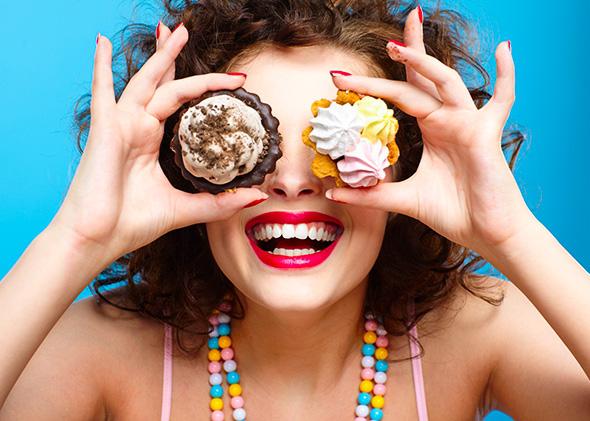When we think of a flavor, what comes to mind is usually the distinctive qualities that separate it from other flavors: the singular “coffeeness” of coffee. That is, a mix of tastes, aromas, mouthfeel, and temperature. But that’s really only half the equation. The other is how that coffee makes you feel. You sip it not just to fill your stomach, or even to wake up, but to get a little pleasure and satisfaction. Without that, drinking it would be a very dull experience indeed, a flat collage of sensations. Pleasure is what animates eating and drinking and makes them truly gratifying.
In the brain, the networks of neurons responsible for pleasure overlap with, but operate separately from, those that generate the “coffeeness” sensation. Sometimes these perceptions are so tightly bound together they’re indistinguishable, such as during the first bites of a meal. At this point, the stomach is rumbling, the mind is primed to eat, so pleasure is at its height. But as the belly fills, everything continues to taste more or less the same (if less vivid) while the “mmm” sensation declines, then disappears. Otherwise, we might keep eating till we exploded.
How pleasure works—and indeed, its exact purpose in eating and human behavior—is a hotly disputed topic among scientists. But no scientific question is more important for chefs, food companies, and any people who pride themselves at being handy in the kitchen.
For much of the 20th century, scientists viewed pleasure as a second-class sensation, a kind of afterthought to the real motivators: pain and discomfort. The field of behaviorism, for instance, was founded on something called the theory of “drive reduction”: certain drives (hunger, thirst, sex, et al.) basically forced animals to act to alleviate discomfort. Supposedly, virtually all behavior could be traced to these. Relief and pleasure were behavioral rewards—important, sure, but since they came afterward, secondary.
James Olds, a behavioral scientist who pioneered pleasure research in the 1950s, thought this was a dismal way to view existence because it dismissed the finer things in life. “For an organism that seeks novelty, ideas, excitement, and good-tasting foods,” he wrote, “the drive-reduction theory was a Procrustean bed.” Procrustes, a son of the Greek god Poseidon, was a rogue smithy who forced guests to fit in his iron bed by amputating their limbs.
Only recently has pleasure begun to get its due. It’s turning out to be more complicated than anyone suspected.
The most obvious way to study it is to look at sweetness. Like the other basic tastes, the ability to detect sugars is evolutionarily ancient, and its brain circuitry may be the foundation on which other, more complex pleasures are built.
Kent Berridge, a neuroscientist at the University of Michigan, began working on the pleasure problem in the 1980s. Scientists at that point thought that dopamine, the powerful neurotransmitter associated with movement and motivation, was the brain’s “pleasure chemical.” But Berridge grew suspicious when, in an experiment, rats that had been given a dopamine suppressant still licked their lips when drinking sugar water—basically, the rodent equivalent of a spontaneous smile. If rats were smiling without dopamine, something else had to be involved. After years of experimentation, Berridge isolated a pleasure circuit in the brains of rodents, which hinged on knots of neurons near the brainstem he dubbed “hedonic hot spots.” When firing, they generate intense pleasure. So far, they have not been isolated in humans, but Berridge postulates they are a feature of mammalian brains.
The hot spots respond to several endogenous opioids, or endorphins, brain chemicals known for their role in stress relief. Dopamine, meanwhile, in Berridge’s view, is what generates “wanting,” or craving. Both craving and pleasure emanate from deep in the brain, in the realm of instinct and reflex. The pleasure in sugar, in food … in, well, everything, is a cornerstone of a basic behavioral cycle. Among other things, pleasure helps mold the brain’s response for future action. And when pleasure responses get out of whack—as with addictive drugs, or saturating our bodies with high-fructose corn syrup—they can be very hard to correct.
Food has many ways to activate this craving and pleasure circuitry. One experiment, done with mice genetically altered to be unable to taste sugar, found they still preferred sugar water over plain. Somehow their guts were signaling their brains, sending a “this is good!” message through some neural backchannel. The mice could not savor the sweetness, yet somehow they were drawn to it just the same. So the next time you dig into a slice of cheesecake, take a moment to ponder the raw biological power it wields over you.
Read more about flavor, from its origins at the dawn of life, through the rise of civilization, up to the strange latter-day sensations created by the food system, in Tasty: The Art and Science of What We Eat.
